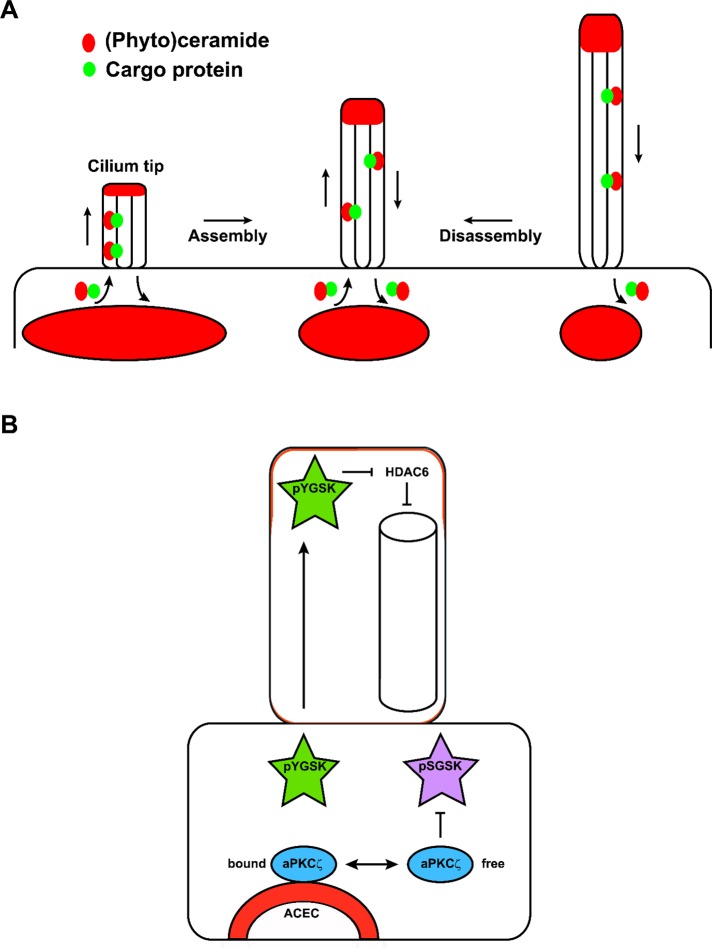FIGURE 8:
Model for flagella/cilia length regulation by (phyto)ceramide. (A) Flux equilibrium model. Lipid vesicles from the ceramide compartment (red) are incorporated into the ciliary membrane at the cilium base. Lipid–cargo protein (green) cotransport ensures the stoichiometry required for simultaneous cilium elongation and membrane expansion. (Phyto)ceramide may serve as a membrane anchor for cotransported cargo proteins, or, alternatively, it may activate a loading/unloading mechanism at the base or tip of the cilium. The cilium length is regulated by the size or ceramide content of the compartment at the base and its lipid flux to the cilium: more ceramide favors cilium assembly and less favors disassembly, until flux rates in both directions are equal and the cilium length is maintained. (B) Regulation of GSK3 by (phyto)ceramide. In Chlamydomonas and ependymal cells, (phyto)ceramide binds to pYGSK3 at the ceramide-enriched compartment (ACEC) and transports it to flagella/cilia. In ependymal cells, ACEC-resident ceramide (red) binding and sequestration of aPKCζ prevent inactivation of GSK-3β by aPKCζ-mediated phosphorylation of Ser-9, which complements activation and transport of pYGSK3. In the cilium tip, pYGSK3 down-regulates HDAC6 or induces cargo release from the motor protein complex, most likely regulated by its interaction with (phyto)ceramide.

